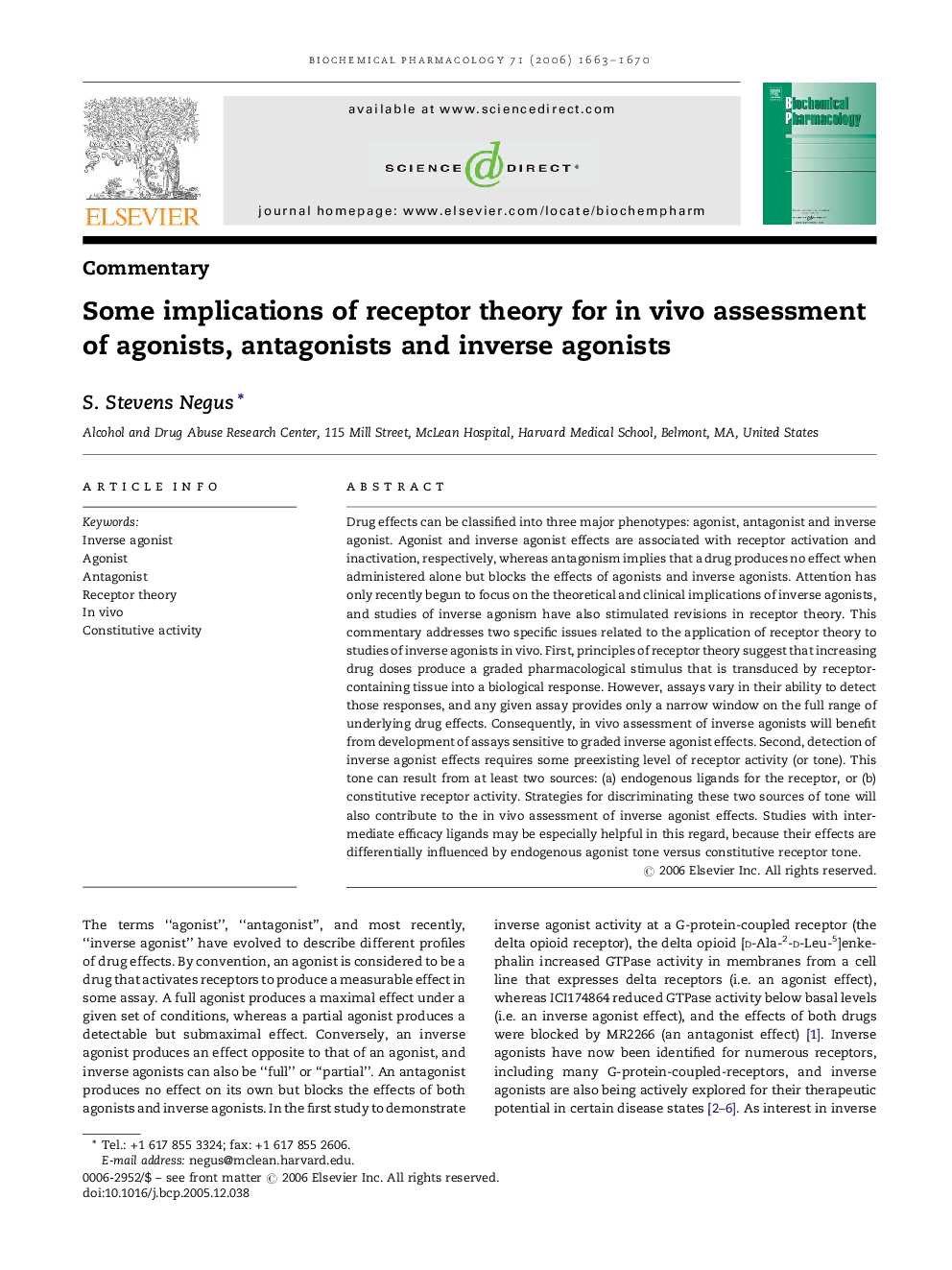| Article ID | Journal | Published Year | Pages | File Type |
|---|---|---|---|---|
| 2515190 | Biochemical Pharmacology | 2006 | 8 Pages |
Drug effects can be classified into three major phenotypes: agonist, antagonist and inverse agonist. Agonist and inverse agonist effects are associated with receptor activation and inactivation, respectively, whereas antagonism implies that a drug produces no effect when administered alone but blocks the effects of agonists and inverse agonists. Attention has only recently begun to focus on the theoretical and clinical implications of inverse agonists, and studies of inverse agonism have also stimulated revisions in receptor theory. This commentary addresses two specific issues related to the application of receptor theory to studies of inverse agonists in vivo. First, principles of receptor theory suggest that increasing drug doses produce a graded pharmacological stimulus that is transduced by receptor-containing tissue into a biological response. However, assays vary in their ability to detect those responses, and any given assay provides only a narrow window on the full range of underlying drug effects. Consequently, in vivo assessment of inverse agonists will benefit from development of assays sensitive to graded inverse agonist effects. Second, detection of inverse agonist effects requires some preexisting level of receptor activity (or tone). This tone can result from at least two sources: (a) endogenous ligands for the receptor, or (b) constitutive receptor activity. Strategies for discriminating these two sources of tone will also contribute to the in vivo assessment of inverse agonist effects. Studies with intermediate efficacy ligands may be especially helpful in this regard, because their effects are differentially influenced by endogenous agonist tone versus constitutive receptor tone.
